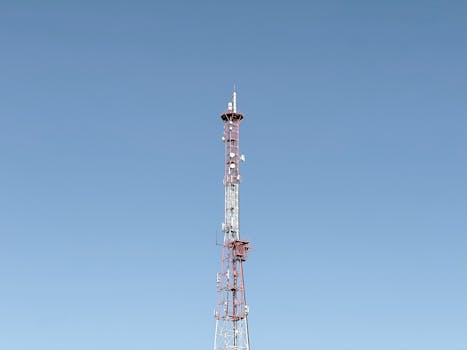
Comparative Analysis of 4G vs. 5G Performance Metrics
Comparative Analysis of 4G vs. 5G performance metrics is a crucial aspect of understanding the evolution of wireless networks. The fifth generation of wireless technology, known as 5G, has been gaining momentum in recent years, promising faster data speeds, lower latency, and greater connectivity. In this article, we will delve into the key performance metrics of 4G and 5G networks, comparing their capabilities and highlighting the advantages of 5G.
Introduction to 4G and 5G Networks
4G, or fourth-generation, wireless networks have been the standard for mobile communication for over a decade. They offer speeds of up to 100 Mbps, with average download speeds ranging from 10-20 Mbps. 4G networks have enabled widespread adoption of mobile broadband, facilitating the growth of mobile commerce, social media, and streaming services.
5G networks, on the other hand, are designed to provide significantly faster data speeds, with peak rates reaching up to 20 Gbps. 5G also promises ultra-low latency, with latency as low as 1 ms, making it suitable for mission-critical applications such as remote healthcare, autonomous vehicles, and industrial automation.
Comparative Analysis of 4G vs. 5G Performance Metrics
Several key performance metrics can be used to compare 4G and 5G networks. These include data speed, latency, capacity, and coverage. In terms of data speed, 5G networks offer significantly faster download and upload speeds compared to 4G. According to a study by Opensignal, 5G networks provide average download speeds of up to 200 Mbps, while 4G networks offer average download speeds of around 30 Mbps.
Latency is another critical metric, particularly for applications that require real-time communication. 5G networks have been designed to provide ultra-low latency, with latency as low as 1 ms. In contrast, 4G networks typically have latency ranging from 50-100 ms. This significant reduction in latency makes 5G networks more suitable for applications such as online gaming, virtual reality, and remote healthcare.
Capacity is also an essential metric, as it determines the number of users that can be supported by a network. 5G networks have been designed to provide greater capacity than 4G networks, with the ability to support a vast number of devices and applications. According to a study by Ericsson, 5G networks can support up to 1 million devices per square kilometer, while 4G networks can support up to 100,000 devices per square kilometer.
Coverage is another critical aspect of wireless networks, as it determines the geographical area that can be served by a network. 5G networks are designed to provide greater coverage than 4G networks, with the ability to penetrate deep into buildings and provide coverage in rural areas. According to a study by Qualcomm, 5G networks can provide coverage of up to 90% of the geographical area, while 4G networks can provide coverage of up to 70%.
Real-World Applications of 4G and 5G Networks
Both 4G and 5G networks have a wide range of real-world applications. 4G networks have enabled the growth of mobile commerce, social media, and streaming services, while 5G networks are expected to enable a new generation of applications, including mission-critical communications, massive machine-type communications, and enhanced mobile broadband.
For example, 5G networks can be used to provide remote healthcare services, such as telemedicine and remote patient monitoring. They can also be used to provide autonomous vehicle services, such as vehicle-to-everything (V2X) communication and smart traffic management.
In conclusion, the comparative analysis of 4G vs. 5G performance metrics highlights the significant advantages of 5G networks. With faster data speeds, lower latency, and greater capacity, 5G networks are poised to enable a new generation of applications and services. As the adoption of 5G networks continues to grow, we can expect to see significant improvements in the way we live, work, and communicate.